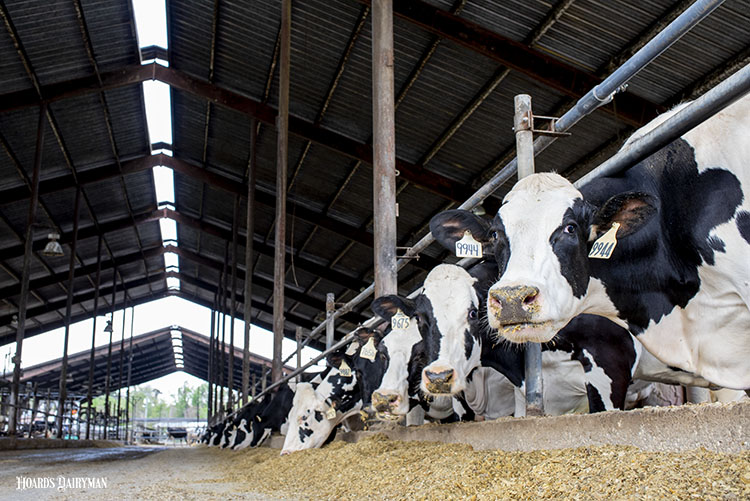
A quick internet search showed me that the term rumen bypass protein was first used in the 1980s. Though it may not be the most perfect technical description, it certainly has staying power. Also, in my view, it is still a useful term for describing the portion of feed protein that is not impacted by the microbial process of the rumen. As is the case with most things, this topic is more complicated when you look a little closer.
So, why the pushback on this long-standing term? First, people just like to push back on things. Secondly, the protein really doesn’t “bypass” the rumen. Instead, it bypasses the activity in the rumen.
We should mention why all of this even matters. The beauty of the rumen is that it uses the fermentation process to harvest energy out of fiber and then create microbial protein to meet the cow’s amino acid (AA) needs. This allows a variety of proteins to be converted into high-quality microbial proteins. For high-producing animals, though, this microbial supply might not be enough. Thus, finding ways to get a targeted AA supply through the rumen for digestion in the small intestine can be helpful. When the intact feed-sourced AA and the microbial protein arrive in the small intestines, the mammalian enzymes digest these just like in a pig, a chicken, or a human.
For a little background, let’s review a few terms. The basic chemistry of protein in the feed and nutrition realm hasn’t changed much for more than 100 years. Crude protein (CP) is still the way most feed and forage products are sold. The use of the term “crude” is intended since it is not an exact measure. The Kjeldal method for determining the nitrogen content in various materials was published way back in 1883! The Kjeldal method tells you the amount of nitrogen, and then when that’s multiplied by 6.25, you get the crude protein content. Metabolizable protein is a further detailed nutrient prediction and is calculated to determine how much of the feed protein and microbial protein will be delivered to the small intestine.
If bypass isn’t the right word, what term is better? There are two nutrient descriptions that probably gained the most traction in the academy and industry. These are rumen undegradable protein (RUP) and rumen degradable protein (RDP). Thus, the preferred, and more technically correct word instead of bypass might be undegradable. Though a little unhandy, it is descriptive. Another term used is protected. Rumen-protected protein seems a good option. The descriptor “rumen-protected” is commonly used for amino acid products that are unavailable to the rumen activity through various methods. The last term I will mention is rumen escape protein. It is less common but does a decent job describing the dynamic.
Aware of availability
When formulating rations, we need much more information than just CP. Chief among the details are the way the protein will be handled by the microbes in the rumen along with the AA content of the protein. With this basic information, we can start to build a modern dairy ration. We may still use the term bypass, but the early limited understanding of the term falls short in today’s systems. Most common feed ingredients have well-established AA details. What we need to keep an eye on due to various processing techniques is how available the protein will be to the rumen microbes.
It must also be stated that some of the things that protect a protein from the microbes might also protect it from the mammalian enzymes in the small intestine. This of course would result in a missed opportunity to turn feed protein into milk and beef. There is a less common but helpful term used to describe this risk. The term is dRUP and is a measure of the percent of the protein that survived the rumen but is still digestible in the small intestine. When buying products in the bypass feed category, knowing the dRUP is very important.
I am often approached by suppliers of new and unique products that fit into this category of feed. Many of these are various versions or upgrades to distiller grains. As well, oilseed meals are commonly sold as bypass protein via various techniques of rumen protection. Some animal byproducts are also considered bypass since they are often cooked, and this process can make the protein less active in the rumen.
When approached with a new feed like this, I like to ask the company if they have completed a multistep protein analysis (MSPE) for the ingredient using the Ross Method. I will need this information to input the correct rumen dynamics into the nutrition model. This analysis uses a rumen fluid in vitro process completed at 16 hours to help determine the right ruminal inputs needed for the nutrition model. There is an additional step to estimate the expected small intestine digestibility. Using this information, along with book value AA content, I can see how the ingredients might fit into a ration. Without this MSPE detail, it is difficult to evaluate an ingredient that has bypass protein claims.
Using the term bypass protein as an umbrella description for all of these details does feel okay to me. Call me old-fashioned. We should be doing more of the MSPE for many of the products we feed. Most by-products have a notable bypass protein opportunity due to heating in their processing. But how often are we checking the actual rumen dynamics of these by-products? As we get better and better at feeding cows in times of tight margins, we can and should be sure we are taking full advantage of the bypass protein in by-products as well as looking to branded RUP protein and rumen-protected AA.








